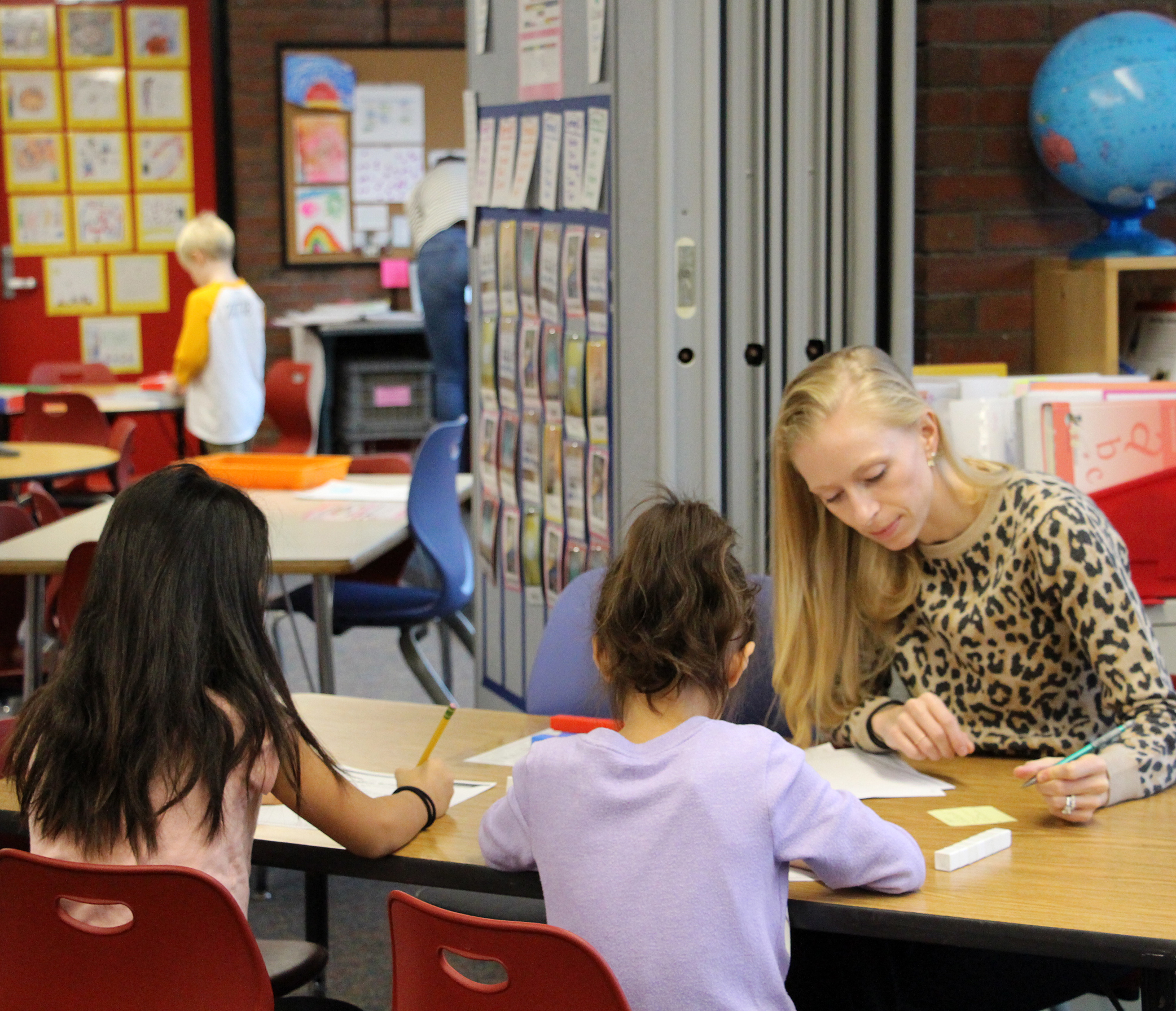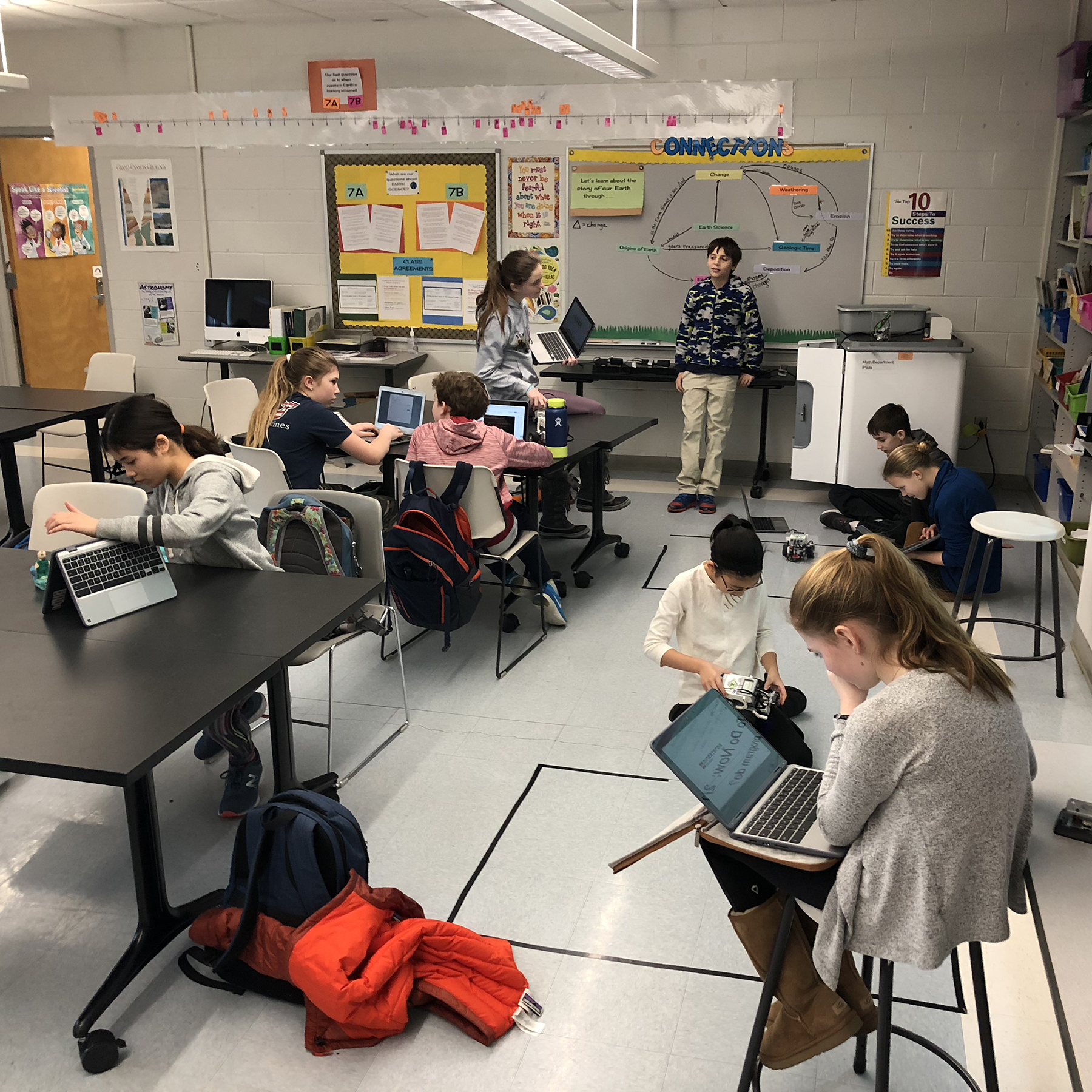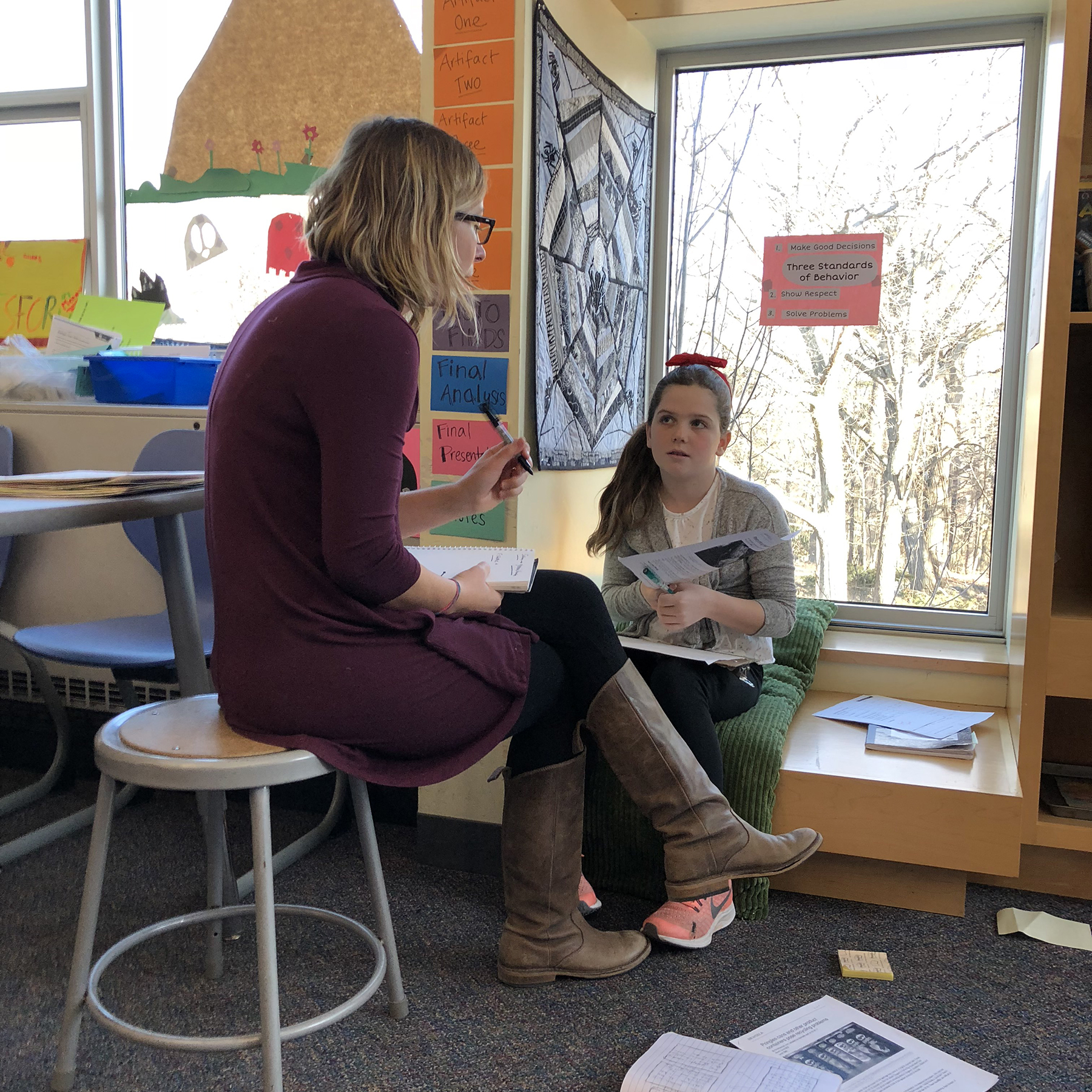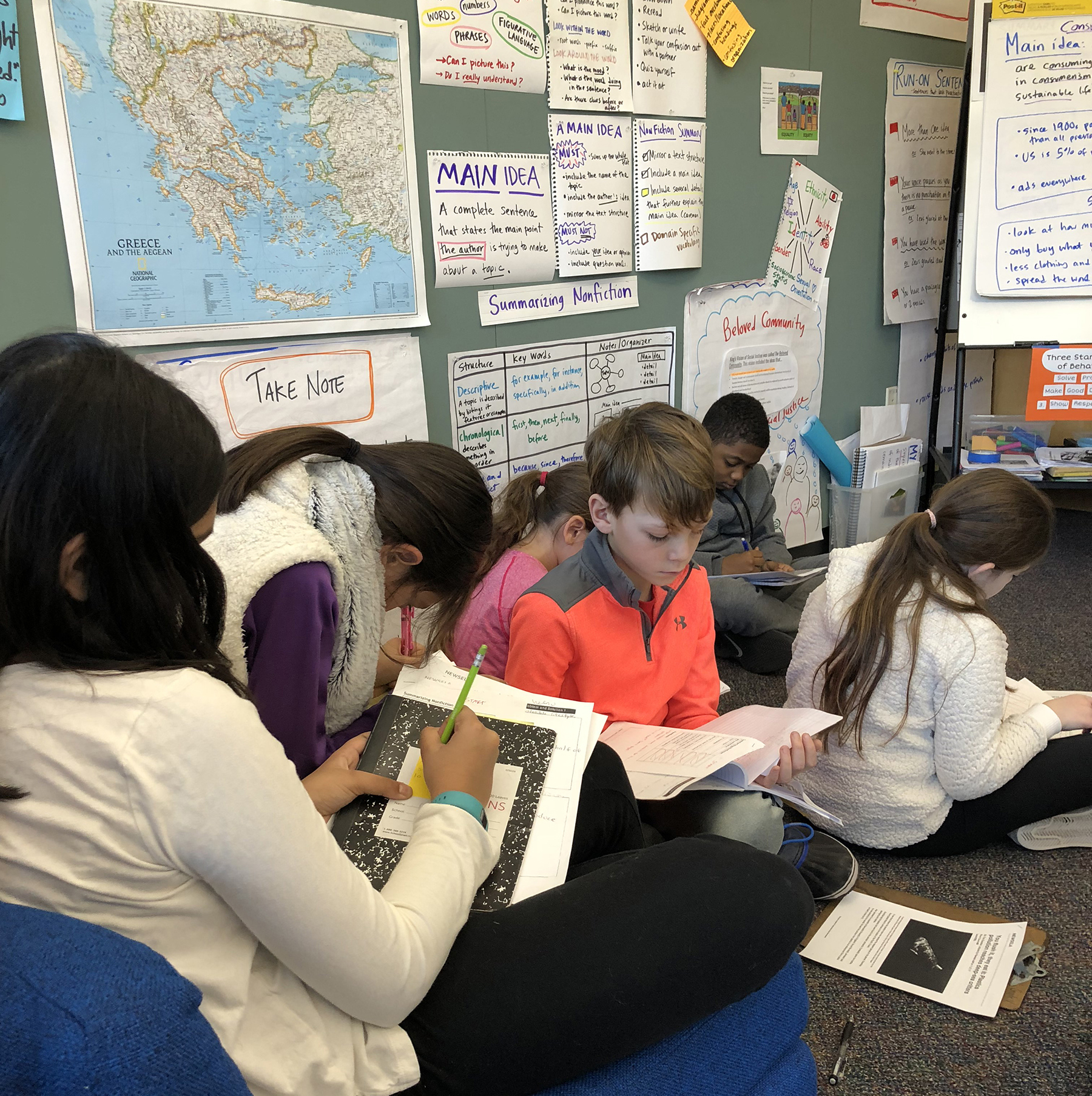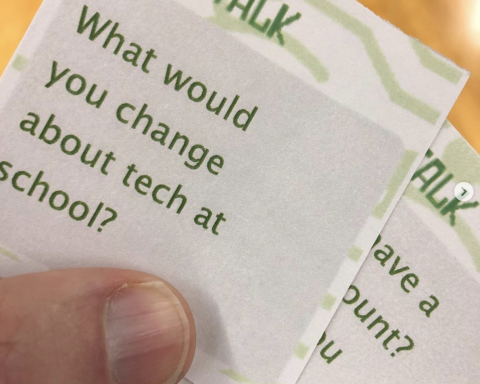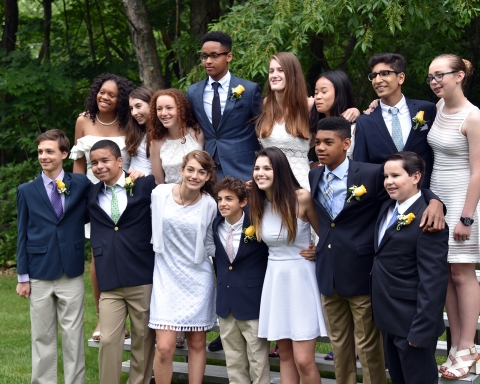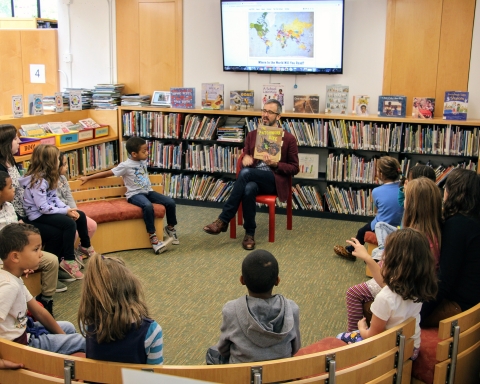For many, a student-centered approach to schooling is defined by caring relationships between teachers and students. It fosters images of a school where curricular, instructional, and procedural decisions are made by first considering the needs of the children and their developmental and educational journey. And, often we think of schools where students are known by the community and come to know themselves as learners and as people. Without question, each of these attributes is true of a school that prioritizes its students, and still, there is more to being a student-centered school.
In order to be truly student-centered, a school must have a student-centered model of instruction. Instruction generally falls into two categories — teacher-centered and student-centered. In a teacher-centered model of instruction, the teacher asks the questions, shares the answers, defines the work, sets the parameters for success, and evaluates the outcome. In a student-centered model of instruction, the table is turned and the student leads the inquiry, chooses the application, designs the outcome, and participates in the evaluation of the result. Student-centered pedagogy is the subject of a rich body of research and applied practice and for me breaks down to four critical components:
- Engagement & Investment — When you peer into a student-centered classroom, you see students ferociously writing in journals, actively engaged in conversation, joyfully partnering at a whiteboard, and quickly moving from one activity to the next. They are engaged and invested in their work, eager to do more, and unaware of the passage of time.
- Inquiry & Application — When you witness student-centered teaching, you hear students asking clarifying and probing questions, seeking opportunities to demonstrate their knowledge and skills, and leading the conversation with their peers. They are naturally curious about the work, intrinsically motivated toward success, and eager to dive into real-world applications.
- Collaboration & Community — When you step into student-centered classrooms, you see teachers facilitating artfully designed lessons that ask students to work together to resolve complicated dilemmas and solve knotty problems by bringing multiple perspectives to bear. They support and challenge one another to take risks, think critically, engage cooperatively, and enjoy learning.
- Reflection & Metacognition — When you observe student-centered instruction, you see students celebrating their strengths, weighing their challenges, defining their outcomes, questioning their thinking, and evaluating what it means to truly learn. They are engaged in the work of improving their own learning through self-focus, observation, analysis of feedback, and personal reflection.
Student-centered instruction requires a skilled teacher able to construct curriculum and lessons that encourage and deliver these critical attributes. Through my observations and shadowing this year at Park, I’ve seen student-centered instruction across the three divisions and in a mix of disciplines.
- In Brian Beaver’s and Carol Buzby’s sixth-grade science classrooms, students work with LEGO Mindstorms to build robots, write code, and overcome a set of physical challenges. Students work in collaborative teams, apply their knowledge, demonstrate active engagement, and learn from success and failure in an iterative and productive way.
- In Eliza Botsford’s fourth-grade classroom, students develop their skill as non-fiction readers through a beautifully structured process. They receive feedback from their teacher, take in the feedback individually and in pairs, set goals, and get to work!
- In Katie Carr’s and Alli Raabe’s co-taught first grade classroom, students work through a variety of reading and writing work stations. Balancing teacher-directed work stations with a variety of student-centered activities, engaged first graders use their time to work individually and collaboratively on various aspects of literacy development.
Park’s 2017 strategic plan focused on applied and social-emotional learning and our emerging portrait of a graduate direct us as a school to embrace the tenets of student-centered instruction. Building on a foundation of caring relationships and student-centered decision making, we continue to explore how these attributes of student-centered instruction — engagement & investment, inquiry & application, collaboration & community, and reflection & metacognition — will shape Park’s ever-evolving instructional model.


